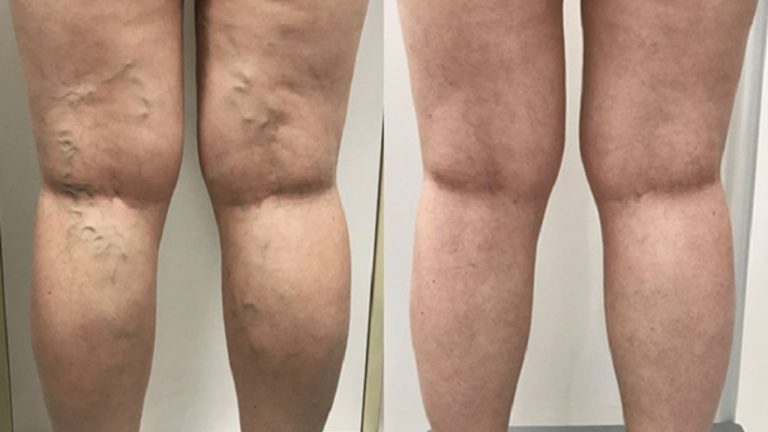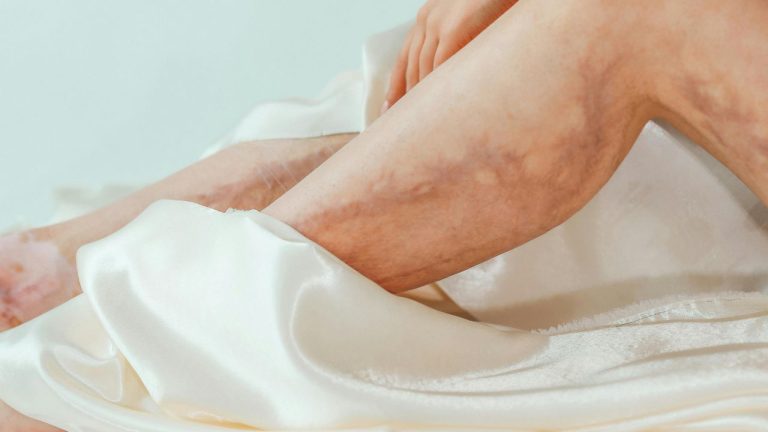If you ask me-why won’t my leg wound heal/ Why does a leg wound need a vascular surgeon? Believe me-you’re not alone! A slow-healing wound isn’t just a skin problem – it’s often a circulation problem. You might know that blood flow fuels healing, and when it’s restricted, wounds can linger, get infected, or even worsen!
That’s where a vascular surgeon comes in. Not only do they care for the wound, but they also tackle the hidden blood flow issues to hold recovery back.
However, lets see the details of why does a leg wound need a vascular surgeon-
Why Does a Leg Wound Need a Vascular Surgeon?
A leg wound needs a vascular surgeon to prevent infections, avoid amputations, and protect overall leg health.
A leg wound that doesn’t heal anymore, that means it’s perhaps due to circulation problems. Non-healing wounds can lead to infection, tissue damage, and even amputation if not properly treated.
And that’s why a vascular surgeon is mandatory to get a proper treatment of these.
Vascular surgeons diagnose and treat blood vessel conditions that are often the root cause of slow-healing or chronic wounds.
However, healthy circulation in the leg is what delivers oxygen and nutrients needed for tissue repair. Without it:
- Healing slows or stalls.
- Infection risk increases.
- Dead tissue (gangrene) may develop.
A vascular surgeon is uniquely trained to identify circulation issues and provide advanced treatments that target the underlying cause. More specifically, you need a vascular surgeon for a leg wound, because he/she will-
- Identifies circulation issues that prevent healing.
- Provides advanced treatments targeting the root cause.
- Performs minimally invasive procedures to restore blood flow.
- Coordinates comprehensive wound care to prevent complications.
- Reduces the risk of amputation by promoting proper tissue repair.
A vascular surgeon doesn’t just treat the visible wound – he/she treats the underlying vascular problem, giving you the best chance for full recovery.
However, to understand the difference-please see the table- This table will help you to find how a vascular surgeon can save your leg.
| Points | Without vascular Surgeon | With Vascular surgeon |
| Blood flow | Circulation problem missed. | Blockage diagnosis and treatment done accordingly. |
| Healing | As the wound stays open, infection risk is higher here. | No scope of such opening. Moreover, faster treatment to ensure better blood flow. |
| Treatment | Only topical/surface wound care. | Advanced level care. |
| Complications | High risk of gangrene & amputation. | A reduced risk of such medical issues. |
| Quality of life | Scope of pain, swelling, poor mobility. | Reduced pain, better mobility and healthier legs. |
What is a non-healing leg wound?
If you don’t know what a non healing wound is-it can severely impact your legs.
Whatever, A non-healing leg wound is an open sore that fails to close within a few weeks. Unlike minor cuts and scrapes, these wounds become chronic and may cause:
- Pain or tenderness.
- Swelling and redness.
- Drainage or pus.
- Thickened or discolored skin around the wound.
- A sore that reopens repeatedly.
Chronic wounds affect millions of people worldwide and are closely linked to vascular conditions!
“Chronic wounds affect an estimated 6.5 million patients in the U.S., with as much as US $25 billion in annual healthcare costs.”BioMed CentralPMC
Common Causes of Non-Healing Leg Wounds / Why Do Leg Wounds Happen?
Non-healing leg wounds often occur due to underlying circulation or health problems. Key causes include:
- Poor blood circulation (Peripheral Arterial Disease – PAD)
- Diabetes and diabetic foot ulcers.
- Venous insufficiency and venous ulcers.
- Pressure ulcers (bedsores).
- Infection and biofilm formation.
- Malnutrition and nutrient deficiencies.
- Chronic inflammatory conditions (e.g., rheumatoid arthritis).
- Radiation therapy-induced wounds.
- Medication side effects (e.g., corticosteroids).
- Surgical complications leading to wound dehiscence.
Reference: The Wound Pros. 10 Causes Of Non-healing Wounds And Their Therapies.
The Link Between Blood Flow and Wound Healing
Think your leg is a flower garden. So, blood here is like the water plus nutrients that keep your garden healthy and properly alive!
Such a way-a healthy circulation delivers oxygen, nutrients, and immune cells to repair tissue and fight infection.
So when veins or arteries are narrowed, blocked, or damaged, it is like you are stopping the even distribution of the water to let into the garden (that means the blood cannot go evenly into the part of your body). Ultimately, this way, the tissue doesn’t get what it needs to be properly alive. Without proper blood flow, even small cuts can linger, turning into chronic wounds with a higher risk of infection or complications.
In a word-healthy blood flow means rapid wound healing !That’s why assessing and improving circulation is often the first step in successful wound care.
When a Leg Wound Becomes More Serious?
A leg wound happens-that doesn’t mean you need to be serious just with it. Not all leg wounds are the same. While minor cuts may heal on their own, some wounds fail to improve and become severe over time. Signs that a wound is not healing normally include:
- Swelling, redness, or warmth around the wound.
- Pain or tenderness that persists or worsens.
- Discoloration or darkened skin near the wound.
- Foul odor or drainage, indicating infection.
Unlike minor wounds, chronic wounds may linger for weeks or months. They require medical attention because untreated wounds can lead to infection, tissue damage, or even amputation.
Conditions That Require a Vascular Surgeon:
Some health problems can reduce blood flow to the legs, making wounds heal slowly or cause complications. Vascular surgeons help find such conditions and treat these issues to prevent infections, tissue damage, or more serious problems.
The most common conditions needing their care include:
- Peripheral Artery Disease (PAD) (Narrowed or blocked arteries reduce blood flow to the legs.)
- Diabetes-Related Wounds (Diabetic Foot Ulcers) (High blood sugar damages nerves and blood vessels.Leads to foot ulcers that heal slowly and risk infection.)
- Varicose Veins and Venous Insufficiency (Blood pools in weakened veins, causing chronic leg ulcers.)
- Blood Clots or Vascular Blockages(Deep vein thrombosis (DVT) or arterial blockages reduce blood flow.It can cause swelling, pain, delayed wound healing, and serious other complications.)
How a Vascular Surgeon Helps in Wound Care?
No doubt, every vascular surgeon plays a crucial role in managing chronic leg wounds. They not only treat the blood flow problems in the affected area, but also guide advanced wound care strategies to promote faster and safer healing.
Diagnosis with Vascular Imaging and Tests
To identify the arterial or venous issues (impaired wound healing), vascular surgeons use tools like duplex ultrasound, CT angiography, and ankle-brachial index (ABI). Accurate diagnosis ensures targeted treatment.
Minimally Invasive Treatments (Angioplasty, Stenting)
Once the diagnosis is done, the next step is minimally invasive treatment. Procedures such as peripheral angioplasty or stent placement help to restore blood flow to the affected area. Finally helps to deliver oxygen and nutrients necessary for tissue repair.
Surgical Options (Bypass, Endarterectomy)
For severe blockages, surgical interventions like arterial bypass or endarterectomy remove obstructions and improve circulation, directly addressing the underlying cause of chronic wounds.
Advanced Wound Care Techniques
Vascular surgeons guide the use of modern wound care strategies, including debridement, antimicrobial therapies, moisture management, and DIME-based approaches. Their ultimate goal is to ensure an optimal local wound healing for even the severely affected patient.
Reference: Robles-Tenorio A, Ocampo-Candiani J. Venous Leg Ulcer.
Benefits of Seeing a Vascular Surgeon Early
When your wound becomes severe, you have no alternative but to take the advice from one of the best vascular surgeons. However, the benefits of seeing a vascular surgeon early can offer you a good opportunity to avoid a few miserable conditions.
Some others are-
- Faster wound healing.
- Lower risk of infection.
- Prevention of amputation.
- Better overall mobility and quality of life.
Conclusion
Vascular health plays a critical role in how quickly and effectively wounds heal. You might know that, without proper blood, even simple wounds on your leg could give you severe complications. When circulation is blocked or weakened, even small cuts on the leg may turn into chronic, non-healing wounds. So here is the necessity of a vascular surgeon. He/she identifies all these issues and takes proper steps to give you a better/healthier leg condition.
The gist is- timely consultation with a vascular specialist can prevent infections, avoid amputations, and protect overall leg health.
So, if you notice a leg wound that isn’t healing, don’t ignore it-immediately consult with a vascular surgeon available nearby. It could be the most important step towards your leg’s recovery.
So, what else?Any queries?
Inbox us today to connect with our vascular surgeon and get the right care for your leg wound.
FAQs
What does a vascular surgeon do for legs?
A vascular surgeon fixes blood flow issues (like locked or narrowed vessels) in the legs. So the wounds heal, plus any severe problem is avoided easily.
Why would you need a vascular surgeon?
You may need one if you have leg pain, swelling, varicose veins. Also if you have leg wounds that won’t heal due to poor circulation or conditions like PAD or diabetes, you will need a vascular surgeon.
How does vascularity affect wound healing?
Healthy blood flow brings oxygen and nutrients that speed up healing, while poor circulation slows recovery and increases infection risk.



